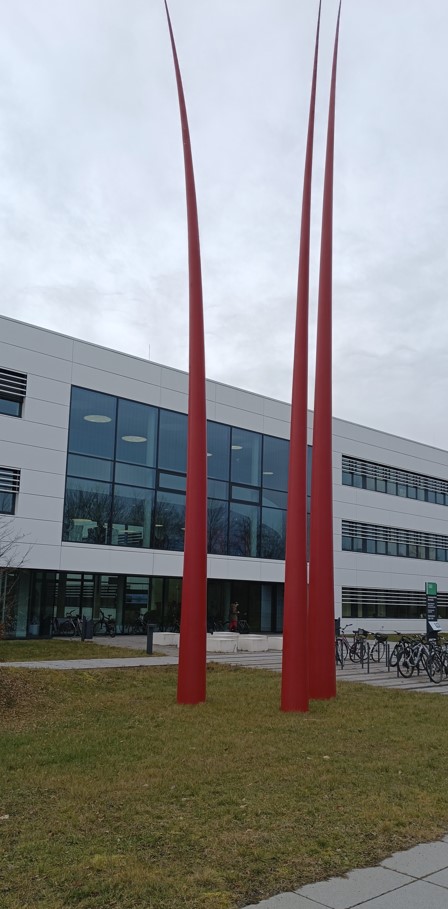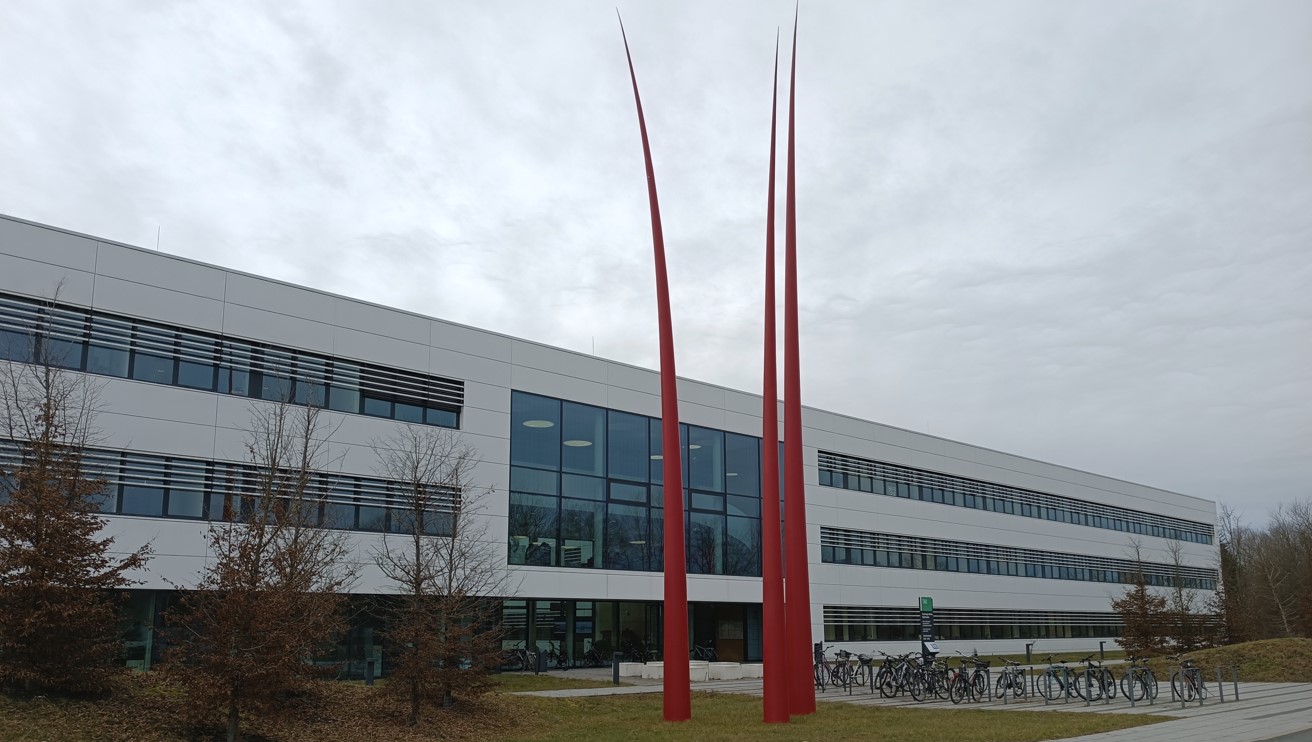TAO building - Technologieallianz Oberfranken
The sculpture in front of the TAO building was created as part of a competition and was completed in 2022. Mannstein favours metal as a material, as it offers him almost unlimited constructive possibilities and has a strong connection to technology. He worked with the company Kratzer Metallbau in Zittau to realise the sculpture.
David Mannstein, born in Bad Hersfeld in 1958 and raised in Fulda, found his way to art in a roundabout way. After various attempts at studying and a master craftsman's certificate, he finally decided to study art in Weimar. It was there that he met his wife and artistic partner Maria Vill. Together they form the artist duo Mannstein + Vill and work almost exclusively in public spaces.

The sculpture itself is reminiscent of blades of grass swaying in the wind. This association was deliberately chosen to emphasise the connection to nature and its significance for science and research. The blades of grass symbolise stability and mobility, rootedness in the earth and growth towards the sun. They symbolise the role of nature as an inspiration and model for materials science and technology.
The sculpture invites a variety of interpretations. It points to the importance of nature for the development of new materials and technologies, ranging from architecture to microtechnologies. The blades of grass also symbolise the research field of energy technology, as they use the same energy sources as we humans do. Current research into photosynthesis and new ways of generating energy are reflected in the sculpture.
The dimensions of the sculpture encourage us to reflect on our role on planet Earth. It makes us realise how short our existence is compared to the Earth's long history and how little we still know and understand. At the same time, it emphasises our great influence on earthly processes.
Formally, the sculpture complements the horizontal structure of the façade of the TAO building with its long ribbon windows and louvres. Its size and the modulated landscape with hills and groups of trees create an interplay between small and large, short and long - both spatially and temporally. The red colour of the sculpture sets it apart from its natural counterparts and acts as a link between the surroundings and the building, nature and culture. It marks the location of the research facilities and creates identity.

